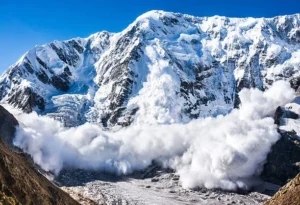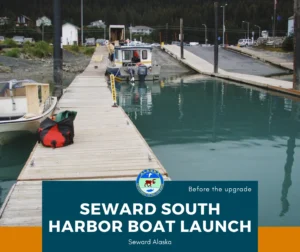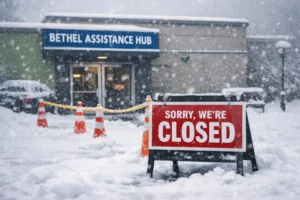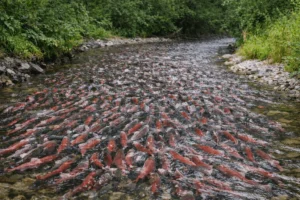Alaska is well known for stunning natural views, a variety of wildlife, and dramatic differences in the climate for different seasons. However, beyond its natural beauty, its economy is deeply connected to the cycles of nature. The most influential determinant that defines Alaska’s economy is the issue of seasonal jobs. Summer tourist or winter fishing jobs in Alaska involve seasonal work. They are a fundamental component of living in the Last Frontier. However, these jobs raise questions about their contribution to Alaska’s economy and the lives of residents of this State. Let’s dive into this fascinating topic.
1. What is Seasonal Employment?
These can be described as jobs available for a limited period within a year, depending on the industry or occasion. These suggested candidates hold jobs in tourism, fishing, construction, and relative segments of the agriculture business in Alaska. These jobs may remain for weeks or months but are vital to the industries.
Examples of Seasonal Employment Opportunities in Alaska
- Tourism Industry: Between June and September, tourists flock to the region, creating thousands of employment opportunities in the hospitality, guiding, retailing, and transportation sectors.
- Fishing Industry: Fishing, especially of salmon and crabs, is another industry in Alaska where people are employed mainly during the fishing season. It comprises fishermen, cannery workers, and support staff who remain at work from May to September.
- Construction: Since Alaska’s winters are severe, most construction activities are undertaken in the summer, leading to increased worker demand.

2. Seasonal Employment As A Factor In The Economy
Seasonal employment has the following benefits for the Alaska’s economy:
i) Contribution to the State’s GDP
Seasonal work is an essential part of Alaska’s Gross Domestic Product (GDP). According to the Resource Development Council, tourism alone brings in more than $4.5 billion annually for the State. This is only possible with the seasonal workers who help handle many tourists during the busiest months. In the same way, the fishing industry, which made about over $4 billion over a year, depends a lot on seasonal workers during the short but busy fishing season.

ii) Impact on Local Businesses
During Alaska’s busy seasons, local businesses do very well when tourists and seasonal workers come to the State. Businesses like restaurants, shops, and service providers make a lot of money during these times. For instance, small companies in Juneau or Ketchikan may make most of their money during the summer because of the steady flow of tourists and the people who work to serve them.
iii) Boosting Employment Rates
Alaska’s unemployment rates are much lower during peak seasons when seasonal employment is present. In fact, because of the rise in seasonal jobs, the State’s unemployment rate often drops down to 3.5% from high 12.2% in the summer. This temporary job increase is essential for many Alaskans because it allows them to make money that might not exist year-round.
3. The Challenges of Seasonal Employment
Seasonal employmees faces the following challenges:
i) Income Volatility
The main problem that employees of companies with seasonal employment need to improve is earnings instability. Many seasonal workers depend on the wages they make during this period to sustain them for the whole year. However, this can be very dangerous because a bad season—be it because of a bad climate, low number of tourists, or other factors affecting fish stock—may be disastrous financially.
ii) Lack of Benefits
Unfortunately, many seasonal jobs do not have full-time, year-round employement. Wages, health insurance, pension schemes, paid vacations, and other benefits are often absent, exposing the worker to exploitation. Such lack of benefits can be even more straining, especially in states such as Alaska, which have high living costs.

iii) Economic Dependence on Unpredictable Factors
As we know, Alaska is heavily dependent on seasonal industries, which means that its economy is highly vulnerable to changes in external factors. For example, global fish prices, tourism trends, and even the effects of climatic change greatly influence seasonal employment opportunities and, hence, the health of the State’s economy.
The Ripple Effect on Communities
Seasonal employment directly affects the communities in the following ways:
i) Population Swells and Shrinks
This is particularly true in small towns in Alaska, where workers may increase or decrease drastically depending on the season. Some towns may only get a few hundred people at certain times during the year, and sometimes, the population of those areas could increase by thousands. This inflow may put a burden on local services such as housing and healthcare, but it also generates revenues that helps to maintain these communities during the quieter months.
ii) Strengthening Cultural Exchange
Seasonal employment also means people come from different parts of the country to Alaska, thus creating a cross-cultural exchange. Because people from other states or even other areas of the world come to Alaska for seasonal employment, their arrival changes the overall Alaskan culture.

The Future of Seasonal Employment in Alaska
To overcome such issues, the State of Alaska has to consider these two factors:
i) The Role of Climate Change
Climate change is a real issue already experienced in Alaska. It will have a significant impact on seasonal employment in the future. Warmer temperatures may be beneficial to tourists as the time spent visiting certain places is increased, but they have negative implications since they affect the regular fishing activities and the natural resources on which most of the seasonal activities depend. The State will have to find ways of dealing with these changes to make seasonal employment a sustainable economic model.
ii) Diversification of the Economy
While there is no doubt that seasonal employment is essential, there is increasing understanding that Alaska’s economy should not be as monocled as it is to ensure that the effects of recession do not plunge the State into catastrophe. Finding other sectors that would always be viable in Alaska, such as technology or renewable energy, may also assist in giving more stable job offers to the people of Alaska and thus minimize the effect of seasonality.

Conclusion
Seasonal employment is a mixed blessing to Alaska’s economy. On the one hand, it generates necessary revenues. It stimulates local enterprises, which allows for the preservation and strengthening of the State’s GDP. At the same time, it gives such issues as income fluctuations and economic dependence-like factors that cannot be predicted. In the future, it will be necessary for Alaska to seek the proper balance between maintaining and expanding the seasonal-oriented industries and creating a more substantial base of year-round economic endeavors that will help the State and its people prosper in the long run.












